
The Sikorsky S-42 was a commercial flying boat designed and built by Sikorsky Aircraft to meet requirements for a long-range flying boat laid out by Pan American World Airways in 1931. The innovative design included wing flaps, variable-pitch propellers, and a tail-carrying full-length hull. The prototype first flew on 29 March 1934, and, in the period of development and test flying that followed, quickly established ten world records for payload-to-height. The "Flying Clipper" and the "Pan Am Clipper" were other names for the S-42.
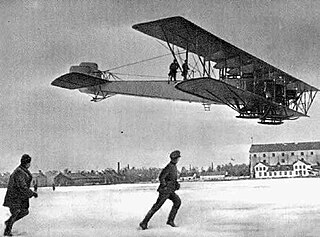
The Sikorsky Ilya Muromets was a class of Russian pre-World War I large four-engine commercial airliners and military heavy bombers used during World War I by the Russian Empire. The aircraft series was named after Ilya Muromets, a hero from Slavic mythology. The series was based on the Russky Vityaz or Le Grand, the world's first four-engined aircraft, designed by Igor Sikorsky. The Ilya Muromets aircraft as it appeared in 1913 was a revolutionary design, intended for commercial service with its spacious fuselage incorporating a passenger saloon and washroom on board. The Ilya Muromets was the world's first multi-engine aircraft in production and at least sixty were built. During World War I, it became the first four-engine bomber to equip a dedicated strategic bombing unit. This heavy bomber was unrivaled in the early stages of the war, as the Central Powers had no aircraft capable enough to rival it until much later.

The Piper PA-15 Vagabond and PA-17 Vagabond are both two-seat, high-wing, conventional gear light aircraft that were designed for personal use and for flight training and built by Piper Aircraft starting in 1948.
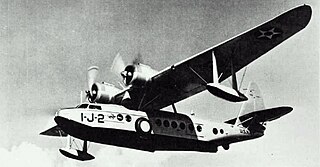
The Sikorsky S-43 is a 1930s American twin-engine amphibious flying boat monoplane produced by Sikorsky Aircraft.

The Sikorsky R-4 is a two-seat helicopter that was designed by Igor Sikorsky with a single, three-bladed main rotor and powered by a radial engine. The R-4 was the world's first large-scale mass-produced helicopter and the first helicopter used by the United States Army Air Forces, the United States Navy, the United States Coast Guard and the United Kingdom's Royal Air Force and Royal Navy. In U.S. Navy and U.S. Coast Guard service, the helicopter was known as the Sikorsky HNS-1. In British service it was known as the Hoverfly.

The Letov Š-18 was a Czechoslovak single-engined, two-seat biplane trainer. It was designed by Alois Smolík at Letov Kbely. The Š-18 first flew in 1925.

The Fokker F-10 was an enlarged development of the Fokker F.VII airliner, built in the late 1920s by the Fokker Aircraft Corporation of America. It was a trimotor passenger aircraft, and it carried 12 passengers. This was four more than the F.VII it was based on, and it had a larger wing and more powerful engines then that design. A crash of this aircraft in 1931, lead to widespread reforms in the U.S. aviation industry and hurt the reputation of wooden winged' aircraft, especially the Fokker Tri-motor types.

The Boeing P-29 and XF7B-1 were an attempt to produce a more advanced version of the highly successful P-26. Although slight gains were made in performance, the U.S. Army Air Corps and U.S. Navy did not order the aircraft.

The M 17 was a German single-engine high-wing sports monoplane. It was designed by Willy Messerschmitt in 1925 in Bamberg. This aircraft won many competitions and allowed Willy Messerschmitt to build his first factory.
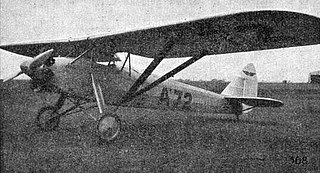
The Hopfner HS-8/29 was a utility aircraft built in Austria in the late 1920s based on the Hopfner HS-5/28. It used a modernised version of its predecessor's airframe, being a conventional, parasol-wing monoplane with seating for two occupants in tandem, open cockpits. The landing gear was of fixed, tailskid type with divided main units. The first prototype used the same Walter NZ 85 engine that the later HS-5/28s had used, but this was followed by 14 production examples with Siemens engines, and a single prototype with a de Havilland Gipsy III.

The Sikorsky S-10 was a Russian military twin-float seaplane that served with the Russian Navy's Baltic Fleet from the summer of 1913 to 1915. After Igor Sikorsky built the successful Sikorsky S-6 for the Russian military, he tried to build another successful aircraft for them. The S-10 was a modified S-6B built by the Russo-Baltic Carriage Factory. Approximately sixteen production versions of the S-10 were built. It had a less powerful engine and generally weaker structure than the S-6. They had either an 80 hp Gnome Monosoupape or a 100 hp Argus Motoren engine. Some were deployed on the world's first operational seaplane carriers.

The Sikorsky S-35 was an American triple-engined sesquiplane transport later modified to use three-engines. It was designed and built by the Sikorsky Manufacturing Company for an attempt by René Fonck on a non-stop Atlantic crossing for the Orteig Prize. It was destroyed in the attempt.

The Baumann Brigadier was a prototype American light transport aircraft of the late 1940s. It was a twin-engined monoplane, which, unusually, was of pusher configuration. Only two were built, plans for production never coming to fruition.

The Sikorsky S-31 was a 1920s American sesquiplane designed and built by the Sikorsky Manufacturing Corporation and configured for aerial photography.
The Sikorsky S-34 was a 1920s American six-seat sesquiplane, designed and built by the Sikorsky Manufacturing Corporation. Only one was built, but the design led to the successful Sikorsky S-38.

The Sikorsky S-8Malyutka (baby) was a small Russian single engine aircraft built by the Russian Baltic Railroad Car Works shortly after Igor Sikorsky became chief engineer of the aircraft manufacturing division in 1912.
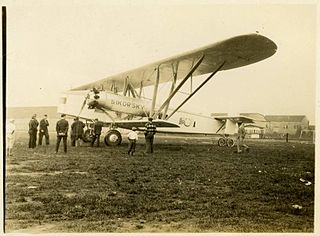
The Sikorsky S-37 was an American twin-engine aircraft built by the Sikorsky Manufacturing Corporation. Both examples of the series were completed in 1927. The S-37 was specifically designed to compete for the Orteig Prize and would be the last land based fixed-wing aircraft Sikorsky would produce.
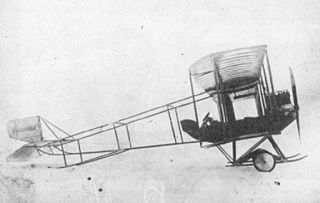
The Sikorsky S-6 was a Russian single engine experimental aircraft similar to the S-5, built in 1911 by Igor Sikorsky.

The Sikorsky S-11 Polukroogly was a Russian single engine prototype reconnaissance aircraft completed in July 1913 by the Russian Baltic Railroad Car Works while Igor Sikorsky was the chief engineer of the aircraft manufacturing division.

Aeroflot Flight 5484 was a scheduled domestic passenger flight from Odesa to Kazan with a stopover in Kyiv that experienced loss of control followed by breaking up in the air on 29 August 1979 over the Tambov Oblast, killing all 63 people on board. It remains the deadliest Tu-124 crash and regular passenger services with the Tu-124 were permanently suspended after the accident, but the Tu-124 was still used by the Soviet military after the accident.



















